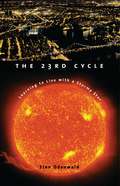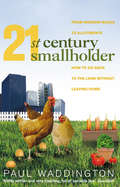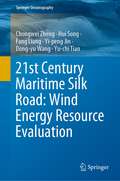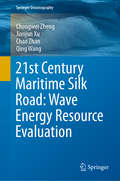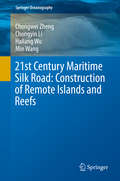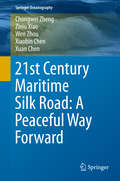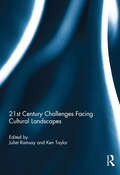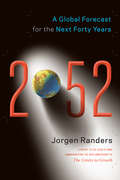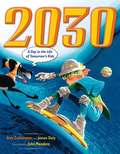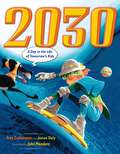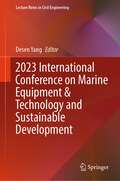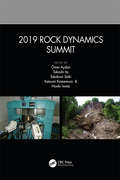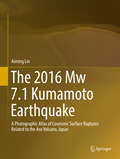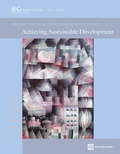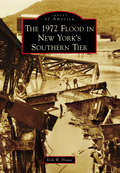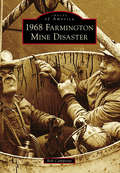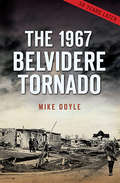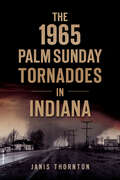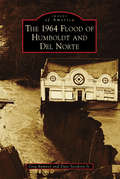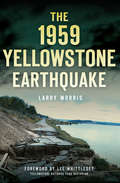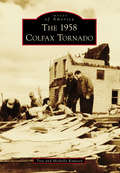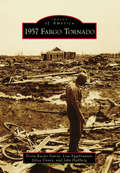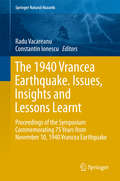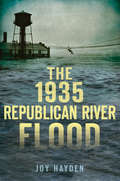- Table View
- List View
The 23rd Cycle: Learning to Live with a Stormy Star
by Sten OdenwaldOn March 13, 1989, the entire Quebec power grid collapsed, automatic garage doors in California suburbs began to open and close without apparent reason, and microchip production came to a halt in the Northeast; in space, communications satellites had to be manually repointed after flipping upside down, and pressure readings on hydrogen tank supplies on board the Space Shuttle Discovery peaked, causing NASA to consider aborting the mission. What was the cause of all these seemingly disparate events? Sten Odenwald gives convincing evidence of the mischievous—and potentially catastrophic—power of solar storms and the far-reaching effects of the coming "big one" brewing in the sun and estimated to culminate in the twenty-third cycle in the year 2001 and beyond. When the sun undergoes its cyclic "solar maximum," a time when fierce solar flares and storms erupt, fantastic auroras will be seen around the world. But the breathtaking spectacles will herald a potentially disastrous chain of events that merit greater preparation than Y2K. Is anyone listening?The 23rd Cycle traces the previously untold history of solar storms and the ways in which they were perceived by astronomers—and even occasionally covered up by satellite companies. Punctuated with an insert containing dramatic color images showing the erupting sun, the book also includes a history of the record of auroral sightings, accounts of communications blackouts from the twentieth century, a list of industries sensitive to solar storms, and information about radiation and health issues.
21st-Century Smallholder: From Window Boxes To Allotments: How To Go Back To The Land Without Leaving Home
by Paul WaddingtonAchieving genuine self-sufficiency of the kind described in John Seymour's classic guide is sadly beyond the vast reach of the urban majority today. Few have the space, and for those few there are comprehensive guidebooks. But where do the rest of us look for the answers to questions like how much effort does it really take to grow your own food? Is beekeeping difficult? Is solar power really worth the bother?From a small terraced house in the middle of a big city, Paul Waddington has made it his business to find out, and while trying it himself, has created a practical and absorbing guidebook along the way. It includes easy-to-read lists, tables, personal anecdote, and stunning illustrations, and more importantly demystifies the subject with practical tips that get to the heart of the matter to show you how you can enjoy the fulfilling aspects of the smallholding life without the hassle and expense of 'going all the way'. If you want to go back to the land without leaving home, this is the perfect guide.
21st Century Maritime Silk Road: Wind Energy Resource Evaluation (Springer Oceanography)
by Chongwei Zheng Hui Song Fang Liang Yi-peng Jin Dong-yu Wang Yu-chi TianThis book aims to establish a wind energy evaluation system, to provide scientific reference for site selection, daily operation and long-term planning of wind power generation, thus to make contribution to breaking the shackles of power shortage. Firstly, it presents the advantages and disadvantages of offshore wind power, then further discusses about the status quo and challenges for wind power programs along the Maritime Silk Road and offer suggestions. A wind energy evaluation system was proposed with the Maritime Silk Road as a case study, including climatic features of wind power (temporal-spatial distribution), long-term climatic trend and mechanism, short-term forecast of wind energy, mid- and long-term projection of wind energy, technology of wind energy evaluation on key point or vital region and offshore wind energy dataset construction, to provide systematic and scientific reference for wind power evaluation and utilization.This book is one of the series of publications on 21st century Maritime Silk Road (shortened as “Maritime Silk Road”). It covers the characteristics of the marine environment and marine renewable energy, remote islands and reefs construction, climate change, early warning of wave disasters, legal escort, marine environment and energy big data construction, etc., contributing to the safe and efficient construction of the Maritime Silk Road. It aims to improve our knowledge of the ocean, thus, to improve the capacity for marine construction, enhance the viability of remote islands and reefs, ease the energy crisis and protect the ecological environment, improve the quality of life of residents along the Maritime Silk Road, and protect the rights, interests of the countries and regions participating in the construction of the Maritime Silk Road. It is a valuable reference for decision-makers, researchers, and marine engineers working in the related fields.
21st Century Maritime Silk Road: Wave Energy Resource Evaluation (Springer Oceanography)
by Chongwei Zheng Jianjun Xu Chao Zhan Qing WangThis book focuses on the evaluation of wave energy in the Maritime Silk Road. Firstly, it compares wave energy and other main energy sources, and then discusses the various disadvantages. It also presents the current research and the difficulties of wave energy evaluation, and systematically analyzes the climatic characteristics of the wave energy, including the temporal–spatial distribution and climatic trend of a series of key factors (e.g. wave power density, availability, richness, stability, energy direction, energy storage). It then describes the design of a short-term forecasting scheme and a long-term projection scheme of wave energy suitable for the Maritime Silk Road, to serve as a plan for the daily operation and long-term development of wave energy. Further, it highlights the wave energy analysis and decision-making in the context of the remote islands and reefs, using Sri Lanka is taken as a case study. Lastly, it presents the first wave energy resource dataset for the Maritime Silk Road.This book is one of a series of publications on the 21st century Maritime Silk Road (shortened as “Maritime Silk Road”) that covers the characteristics of the marine environment and marine new energy, remote islands and reef construction, climate change, early warning of wave disasters, legal escort, marine environment and energy big data construction, contributing to the safe and efficient construction of the Maritime Silk Road. It aims to improve our knowledge of the ocean, and so improve the capacity for marine construction, enhance the viability of remote islands and reefs, ease the energy crisis and protect the ecological environment and improve the quality of life of residents along the Maritime Silk Road, as well as to protect the rights, and interests of the countries and regions participating in the construction of the Maritime Silk Road. This book is a valuable reference resource for decision-makers, researchers, and marine engineers working in the related fields.
21st Century Maritime Silk Road: Construction of Remote Islands and Reefs (Springer Oceanography)
by Chongwei Zheng Chongyin Li Hailang Wu Min WangThis book focuses on the construction of remote islands and reefs in the Maritime Silk Road. Firstly, it analyzes the functions, necessity and difficulties of the construction of remote islands and reefs; then provides corresponding countermeasures. According to the urgent demand of electricity and freshwater, it focus on wave and offshore wind energy evaluation of the important remote islands and reefs of the Maritime Silk Road, providing reference for the choice of location of power plants, daily operation and long term plan of wave/wind power generation. Several important key points are selected in the case study to realize their electricity and freshwater self-sufficiency and thus to improve their viability. This book also presents the marine characteristics (especially hazardous elements) under the demands of island runway construction and marine new energy development, to promote safe and efficient implementation of the remote islands and reefs construction. This book is one of the series of publications on the 21st Century Maritime Silk Road (shortened as “Maritime Silk Road”). It covers the characteristics of the marine environment and marine new energy, remote islands and reefs construction, climate change, early warning of wave disasters, legal escort, marine environment and energy big data construction, etc. contributing to the safe and efficient construction of the Maritime Silk Road. It aims to improve our knowledge of the ocean, thus to improve the capacity for marine construction, enhance the viability of remote islands and reefs, ease the energy crisis and protect the ecological environment, improve the quality of life of residents along the Maritime Silk Road, and protect the rights, interests of the countries and regions participating in the construction of the Maritime Silk Road. It will be a valuable reference for decision-makers, researchers, and marine engineers working in the related fields.
21st Century Maritime Silk Road: A Peaceful Way Forward (Springer Oceanography Ser.)
by Chongwei Zheng Ziniu Xiao Wen Zhou Xiaobin Chen Xuan ChenThis book focuses on understanding the characteristics of the marine environment; overall characteristic of the marine resources (especially the marine new energy) and their current utilization; important routes, channels, and ports; and the Maritime Silk Road from the perspective of international law. It also discusses the significance and opportunities of the Maritime Silk Road initiative, analyzes the challenges involved in the construction of the Maritime Silk Road and provides corresponding countermeasures. Based on the above research, this book also proposes to construct a comprehensive application platform for the Maritime Silk Road that will be a practical tool for decision-making. <P><P> This book is one of the series publications on the 21st century Maritime Silk Road (shortened as “Maritime Silk Road”). This series publications cover the characteristics of the marine environment and marine new energy, remote islands and reefs construction, climate change, early warning of wave disasters, legal escort, marine environment and energy big data construction, etc. contributing to the safe and efficient construction of the Maritime Silk Road. It aims to improve our knowledge of the ocean, thus to improve the capacity for marine construction, enhance the viability of remote islands and reefs, ease the energy crisis and protect the ecological environment, improve the quality of life of residents along the Maritime Silk Road, and protect the rights, interests of the countries and regions participating in the construction of the Maritime Silk Road. It will be a valuable reference for decision-makers, researchers, and marine engineers working in the related fields.
21st Century Challenges Facing Cultural Landscapes
by Juliet Ramsay and Ken TaylorThrough stories of diverse landscapes from around the world, this book captures human cultures and their land use practices in the environments they inhabit. The chapters cover topics from heritage in the 21st Century, appreciating and safeguarding values while facing challenges wrought by change.This title will lead readers through fascinating stories of landscapes and people. We learn of the physical and spiritual structure of rice terraces of the Honghe Mountains in China maintained by following a 1300 year sustainable practice of water allocation, while the colonial tea plantations of the Sri Lankan highlands are managed by Indian Tamils who now seek tourism as a means of additional income. Sustainable agricultural methods in the USA are being introduced to prevent landscape loss while in Australia a challenge confronting family farms is progressing to rural industrialisation. Challenges are further outlined in the mythical story of Finland's Saint Henrik pilgrimage and in the intangible Ui-won gardens of Korea. The huge challenge for Japan's landscapes is the legacy from fierce natural 21st Century disasters while in Australia's Dampier Archipelago, an avoidable yet brutal development on a unique Aboriginal rock sculptured landscape highlights serious concerns about heritage governance. These remarkable stories of landscapes and their management are inseparable from the communities that inhabit them. This book was originally published as a special issue of Landscape Research.
2052: A Global Forecast for the Next Forty Years
by Jorgen RandersForty years ago,The Limits to Growthstudy addressed the grand question of how humans would adapt to the physical limitations of planet Earth. It predicted that during the first half of the 21st century the ongoing growth in the human ecological footprint would stop-either through catastrophic "overshoot and collapse"-or through well-managed "peak and decline. "So, where are we now? And what does our future look like? In the book2052, Jorgen Randers, one of the co-authors ofLimits to Growth, issues a progress report and makes a forecast for the next forty years. To do this, he asked dozens of experts to weigh in with their best predictions on how our economies, energy supplies, natural resources, climate, food, fisheries, militaries, political divisions, cities, psyches, and more will take shape in the coming decades. He then synthesized those scenarios into a global forecast of life as we will most likely know it in the years ahead. The good news: we will see impressive advances in resource efficiency, and an increasing focus on human well-being rather than on per capita income growth. But this change might not come as we expect. Future growth in population and GDP, for instance, will be constrained in surprising ways-by rapid fertility decline as result of increased urbanization, productivity decline as a result of social unrest, and continuing poverty among the poorest 2 billion world citizens. Runaway global warming, too, is likely. So, how do we prepare for the years ahead? With heart, fact, and wisdom, Randers guides us along a realistic path into the future and discusses what readers can do to ensure a better life for themselves and their children during the increasing turmoil of the next forty years.
2030: A Day In The Life Of Tomorrow's Kids
by Amy Zuckerman James DalyGlobal events and new technology change how we live from moment to moment. So, what will our world be like in twenty years? Come take a look as futurists Amy Zuckerman and James Daly examine what a kid?s daily life might be like in the year 2030. Inspired and informed by trends and scientifi c and technological research, 2030 is not only a peek at some cool future gadgets (talking dog collars, cars that drive themselves), but also a thoughtful examination of how our lives might be impacted as we adjust to environmental change.
2030: A Day in the Life of Tomorrow's Kids
by Amy Zuckerman James DalyWinner of the 2012 Grand Canyon Reader Award for a Non-fiction bookGlobal events and new technology change how we live from moment to moment. So, what will our world be like in twenty years? Come take a look as futurists Amy Zuckerman and James Daly examine what a kid?s daily life might be like in the year 2030. Inspired and informed by trends and scientifi c and technological research, 2030 is not only a peek at some cool future gadgets (talking dog collars, cars that drive themselves), but also a thoughtful examination of how our lives might be impacted as we adjust to environmental change.
2023 International Conference on Marine Equipment & Technology and Sustainable Development (Lecture Notes in Civil Engineering #375)
by Desen YangThis book contains original, peer-reviewed, and selected research papers that were presented at the 2023 International Conference on Marine Equipment & Technology and Sustainable Development, which took place in Beijing, China on April 1st 2023. The papers cover a range of topics, including but not limited to: the vision and goals of building a maritime community with a shared future, marine machinery and transportation, marine ecology, environmental protection and conservation, marine safety, future ships and marine equipment, marine engineering, marine information and technology, maritime policy, and global governance.The papers included in this volume provide the latest findings on methodologies, algorithms, and applications in marine equipment and technology, as well as sustainable development. As a result, this book is an invaluable resource for researchers, engineers, and university students who are interested in these fields.
2019 Rock Dynamics Summit: Proceedings of the 2019 Rock Dynamics Summit (RDS 2019), May 7-11, 2019, Okinawa, Japan
by Ömer Aydan Takashi Ito Takafumi Seiki Katsumi Kamemura Naoki IwataRock dynamics has become one of the most important topics in the field of rock mechanics and rock engineering, and involves a wide variety of topics, from earthquake engineering, blasting, impacts, failure of rock engineering structures as well as the occurrence and prediction of earthquakes, induced seismicity, rock bursts to non-destructive testing and explorations. Rock dynamics has wide applications in civil and infrastructural, resources and energy, geological and environmental engineering, geothermal energy, and earthquake hazard management, and has become one of the most topical areas. 2019 Rock Dynamics Summit contains 8 keynote addresses and 128 regular full papers that were presented at the 2019 Rock Dynamics Summit (2019 RDS, Okinawa, Japan, 7-11 May 2019), a specialized conference jointly organized by the Rock Dynamics Committee of the Japanese Society of Civil Engineers (JSCE-RDC), the Japanese Society for Rock Mechanics (JSRM), and which was supported by the International Society for Rock Mechanics and Rock Engineering (ISRM) and the Turkish National Society for Rock Mechanics (TNSRM). The contributions cover a wide range of topics on the dynamic behavior of rock and rock masses and scientific and engineering applications, and include: - Laboratory tests on Dynamic Responses of Rocks and Rock Masses / Fracturing of Rocks and Associated Strong Motions- Estimation Procedures and Numerical Techniques of Strong Motions Associated with the Rupture of Earth’s Crust and Some Strong Motion- Dynamic Response and Stability of Rock Foundations, Underground Excavations in Rock, Rock Slopes Dynamic Responses and Stability of Stone Masonry Historical Structures and Monuments- Induced Seismicity- Dynamic Simulation of Loading and Excavation- Blasting and machinery induced vibrations- Rockburst, Outburst, Impacts- Nondestructive Testing Using Shock Waves- Case Histories of Failure Phenomenon in Rock Engineering 2019 Rock Dynamics Summit contains the state-of-the-art in rock dynamics, and will be invaluable to professionals and academics interested in the latest advances in new techniques for experiments, analytical and numerical modelling as well as monitoring in dynamics of rocks and rock engineering structures.
2019 International Bamboo Construction Competition: From the Concepts to the Realized Pavilions (Springer Tracts in Civil Engineering)
by Kewei Liu Cristoforo Demartino Zhi Li Qinghui Liu Yan XiaoThis volume builds upon the 2019 International Bamboo Construction Competition (IBCC 2019) from the Concepts to the Realized Pavilions. Several designed projects are described, and particular attention is devoted to the realized prototypes. It also presents the Bamboo Eye, an important example of architecture realized by INBAR for the 2019 Beijing Horticultural Expo. As such, the volume provides an overview of the use of bamboo poles and engineered bamboo products for temporary and normal constructions, and represents a compact review of the applications of bamboo poles and/or engineered bamboo products in the construction industry. This book will be of interest for researchers, architects and structural engineers in field of bamboo constructions.
The 2016 Mw 7.1 Kumamoto Earthquake
by Aiming LinThis book shows the deformation characteristics of coseismic surface ruptures produced by the 2016 Kumamoto earthquake and the relationship between the Aso volcano and active faults. In particular, the rupturing mechanisms and processes involved in the seismogenic faults related to the crustal structure under the Aso volcano caldera are covered. The book is intended to help bridge the gaps between seismology, seismic disaster prevention, volcanology, seismotectonics, and geology and to encourage further studies of earthquake mechanisms and seismic faulting processes.
2009 Annual Review of Development Effectiveness
by World Bank'The Annual Review of Development Effectiveness 2009' presents evidence on the World Bank's efforts in two areas. Part I tracks the outcomes of Bank projects and country programs and the evolution of monitoring and evaluation (M and E). Part II examines the Bank's support for environmentally sustainable development compatible with economic growth and poverty reduction. The Bank's project performance rebounded in 2008, allaying concerns about the weakened performance in 2007. As previous ARDEs have shown, project performance has been improving gradually for 15 years according to the traditional measure-percent of projects with satisfactory (versus unsatisfactory) outcomes. But IEG ratings of M and E quality for completed projects indicate considerable room for progress. Information to assess impacts continues to be lacking although preliminary data suggests improvements in baseline data collection. Bank support for the environment has recovered since 2002 due to new sources of concessional finance. The outcomes of environment projects have improved in recent years. A growing number of regional projects are addressing the shared use of water resources. New global partnerships are deepening the Bank's involvement in climate change issues. But M and E remains weak: three-quarters of environment-related projects-those managed by sectors other than environment-lack reporting of environmental outcomes.
1972 Flood in New York's Southern Tier, The (Images of America)
by Kirk W. HouseIn June 1972, Hurricane Agnes hit the East Coast with a monstrous and devastating force, bringing a deluge across multiple states and slamming four counties in the Southern Tier: Steuben, Chemung, Tioga, and Broome. Dozens died and property damage ran into the millions as Corning, Elmira, Owego, Binghamton, and other communities suddenly found themselves under water. The flood destroyed the Erie Lackawanna Railroad, staggered the Penn Central, shut down Corning Glass Works for weeks, and devastated the Corning Museum of Glass--a major cultural resource. Lives and landscapes were forever changed when homes and businesses washed away in a matter of minutes. Henceforth, the region's history became permanently divided into the times before and the times after the 1972 flood. Through stunning images, The 1972 Flood in New York's Southern Tier chronicles the extraordinary destruction of twisted rail lines, devastated streets, exhausted recovery workers, rivers bursting their banks, cars on houses, and houses on cars, all while capturing the communities' rebuilding efforts and recovery of the glass museum treasures.
1968 Farmington Mine Disaster (Images of America)
by Bob CampioneCoal in the United States was discovered in the 18th century by landowners and farmers on the slopes of the hillsides in the Appalachian region. It was not until the late 19th century that this black rock would become a part of an industrial revolution. One of the first mines to commercially produce coal was in Fairmont, West Virginia, and began the Consolidated Coal Corporation. On November 20, 1968, the Farmington No. 9 mine explosion changed the course of safety for future mining and the lives of 78 families whose sons, husbands, fathers, and loved ones never came back from the cateye shift the next day.
1967 Belvidere Tornado, The: A 40-year Anniversary Perspective (Disaster)
by Mike DoyleClaiming the lives of seven adults and seventeen children, the Belvidere tornado struck the most vulnerable at the worst possible time: just as school let out. More than five hundred people suffered injuries. New interviews and fascinating archival history underscore the horrific drama, as well as the split-second decisions of victims and survivors that saved their families and neighbors. Since the tragedy, three more devastating tornadoes have further defined Boone County’s resilience: Poplar Grove in 2008, Caledonia in 2010 and Fairdale in 2015.
The 1965 Palm Sunday Tornadoes in Indiana (Disaster)
by Janis ThorntonAuthor Janis Thornton reveals the stories of a day in Indiana like no other.Palm Sunday 1965 started as the nicest day of the year, the kind of weather that encouraged Hoosiers to get out in the sun, fire up the grill, hit the golf course, or roll down their car windows and take a leisurely drive. That evening, however, throughout northern and central Indiana, the sky turned an ominous black, and storms moved in, quickly manifesting as Indiana's worst tornado outbreak. Within three hours, twisters, some a half-mile wide, ripped through seventeen counties, devastating communities and leaving death and destruction in their wake. When the tornadoes were finished with Indiana, 137 people were dead, hundreds were injured, and thousands more were forever changed.
1964 Flood of Humboldt and Del Norte, The
by Greg Rumney Dave Stockton Jr.The 1964 flood in the Eel and Klamath Rivers drainages represents an extreme weather event. Both the Northern California and Southern Oregon coasts are host to many floods, but the 1964 flood stands out as a representation of the "perfect storm." Three events occurred that led to the flood. First, a cold front moved in and dropped several feet of snow. Second, a warm front called the "pineapple connection" moved in and released lots of rain while melting the snowfall--local measurements varied from 20 to 32 inches of rainwater in three days. And third, the highest tide of the year had backed up debris and water for several miles. At its peak, the Eel River was discharging more than 800,000 cubic feet per second. Another contributing factor was that besides being one of the fastest rising and falling rivers in the world, the Eel River has the heaviest sediment load second only to the Yellow River in China.
The 1959 Yellowstone Earthquake (Disaster Ser.)
by Larry MorrisExperience the epic earthquake that shook up Yellowstone and the rescue effort that ensued.At 11:37 p.m. on August 17, 1959, a magnitude 7.5 earthquake rocked Montana's Yellowstone country. In an instant, an entire mountainside fractured and thundered down onto the sites of unsuspecting campers. The mammoth avalanche generated hurricane-force winds ahead of it that ripped clothing from backs and heaved tidal waves in both directions of the Madison River Canyon. More than two hundred vacationers trapped in the canyon feared the dam upstream would burst. As debris and flooding overwhelmed the river, injured victims frantically searched the darkness for friends and family. Acclaimed historian Larry Morris tells the gripping minute-by-minute saga of the survivors who endured the interminable night, the first responders who risked their lives and the families who waited days and weeks for word of their missing loved ones.
The 1958 Colfax Tornado (Images of America)
by Troy Knutson Michelle KnutsonJune 4, 1958, was a muggy and breezy day in western Wisconsin. Across central Minnesota, severe weather was brewing. In the early afternoon, the Minnesota storms crossed the border into Wisconsin. As farmers were tending to milking chores and families were wrapping up the workday and sitting down to supper, one of the worst tornadoes in Wisconsin's history touched down. At 7:07 p.m., what had been multiple, smaller tornadoes combined into one massive F5 tornado that ripped through the village of Colfax, leaving a path of death and destruction that would require months of recovery. In Colfax, 12 people were killed, hundreds were injured, and millions of dollars in damage was done to property. However, in the wake of the storm, a community and its neighbors came together as one to care for the survivors and begin the process of healing and rebuilding.
1957 Fargo Tornado (Images of America)
by Trista Raezer-Stursa Lisa Eggebraaten Jylisa Doney John HallbergOn the evening of June 20, 1957, a tornado ripped through Fargo, North Dakota. It caused the deaths of seven children and five adults and left 116 injured. The tornado destroyed 359 buildings and damaged 2,543 more. The nine-mile path of destruction covered over 66 blocks in town, leaving more than 2,000 people homeless and causing approximately $20 million worth of damage. Following the tornado, first responders quickly united to aid those in need, setting up disaster headquarters, finding shelter for over 600 people, and distributing more than 100 tons of clothing and bedding. Dr. Tetsuya Fujita, a meteorologist, studied the Fargo tornado when creating the Fujita scale (F-scale) and later rated it an F5, the most destructive rating. Images of America: 1957 Fargo Tornado, shines a light on the tornado's destruction and the rebuilding of a united and vibrant community.
The 1940 Vrancea Earthquake. Issues, Insights and Lessons Learnt
by Radu Vacareanu Constantin IonescuThese proceedings include most of the available information on this major seismic event and its consequences. With an estimated moment magnitude of 7. 7 and a heavy toll in terms of human and economic losses, it ranks as the largest intermediate-depth earthquake in Europe in the twentieth century. Nevertheless, because of the difficult conditions in the 1940s, the lessons learnt after the Vrancea earthquake were not extensively shared with the international scientific community and thus, this book fills a gap in the literature discussing the knowledge acquired after major disasters. Past experience together with current understanding of the 1940 Vrancea earthquake are presented along with the latest information on Romanian seismicity, seismic hazard and risk assessment, and seismic evaluation and rehabilitation of buildings and structures. Moreover, it includes excerpts from Romanian post-disaster reports and textbooks concerning the earthquake.
The 1935 Republican River Flood (Disaster)
by Joy HaydenOn May 31, 1935, a storm system surged along the Republican River, bursting its banks in a matter of minutes with a roar that could be heard miles away. The greatest flood to hit the tri-state area of Colorado, Kansas and Nebraska, it left behind a landscape rearranged beyond recognition and claimed more than one hundred casualties. However, amid all the destruction and sorrow, amazing acts of heroism and unwavering courage were reported throughout the valley. Author Joy Hayden reveals the historic disaster and the steadfast resolve of those who witnessed it.
